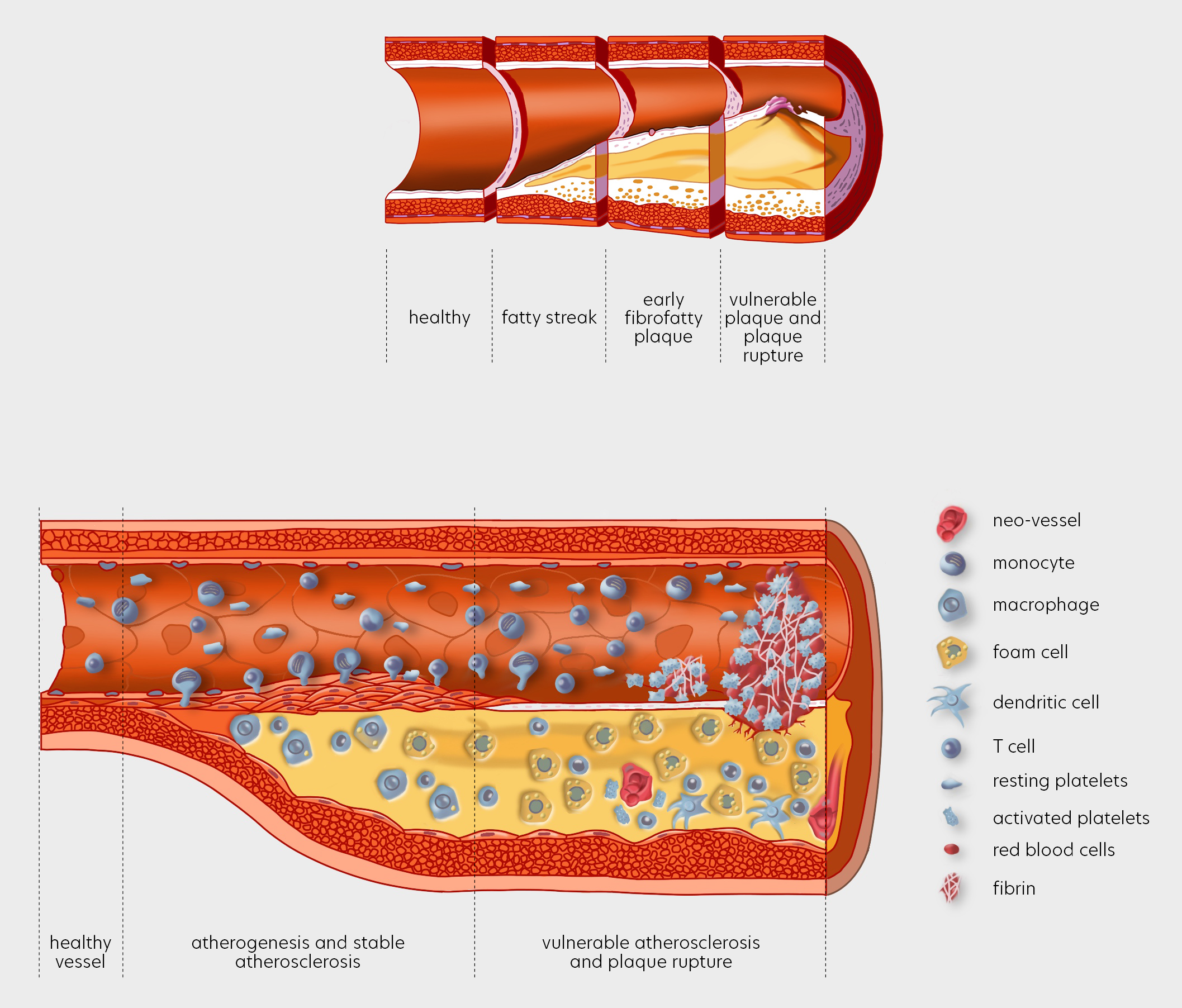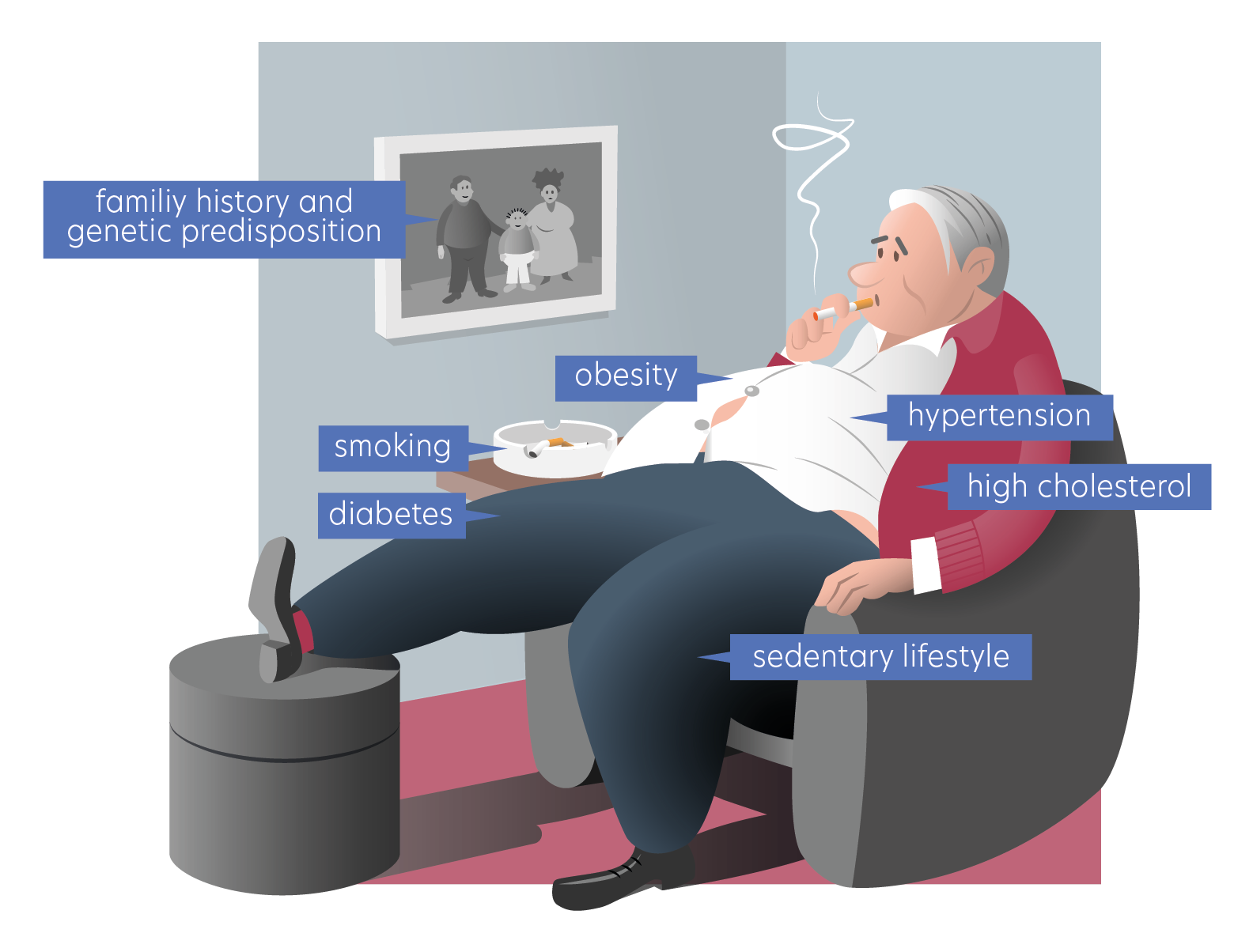Atherosclerosis and cardiovascular risk
Pathophysiology of Atherosclerosis
Atherosclerosis is a chronic inflammatory condition of the vascular wall that can lead to plaque formation in the vessel walls and ultimately stenosis of arteries. It is the pathophysiological process that leads to cardiovascular disease such as coronary artery disease, peripheral arterial disease, and cerebrovascular disease. Worldwide, cardiovascular disease is the number one cause of death. In the Netherlands, it is the second most common cause of death.
Atherosclerosis starts with accumulation of LDL cholesterol in the subendothelial layer of the vascular wall. In this subendothelial space, LDL becomes oxidized after which monocytes migrate into the vessel wall and differentiate into macrophages. These macrophages ingest the oxidized LDL and transform into foam cells, which trigger inflammatory cascades and eventually lead to the development of atherosclerotic plaque. The degradation of the lipid-laden foam cells results in a necrotic core in the intima layer of the vascular wall. A vulnerable plaque with a high risk of rupturing is characterized by a large necrotic core with a thin, fibrous, macrophage-rich capsule around it. Rupture of a vulnerable plaque exposes the thrombogenic core of the plaque to come into contact with the bloodstream, resulting in rapid thrombus formation. A thrombus can cause acute occlusion of an artery, resulting in, for example, an acute coronary syndrome or a cerebrovascular accident.
Atherosclerosis has a slow course that often begins at an early age and does not become apparent until later in life. Exposure to certain risk factors enhances initiation of atherosclerosis and increase the risk of cardiovascular disease. One of the cornerstones of treatment of cardiovascular disease is therefore prevention through treatment of risk factors.
Key points
- Atherosclerosis is a chronic condition characterized by accumulation of LDL cholesterol and inflammation in the vascular wall.
- Based on an individuals’ calculated cardiovascular risk, a patient-specific treatment plan can be set up.


Risk factors
The main modifiable risk factors for atherosclerosis are:
- Hypertension
- Smoking
- Dyslipidemia (namely elevated levels of LDL cholesterol and lipoprotein(a))
- Obesity
- Little to no physical activity
- Diabetes mellitus
- Other chronic (inflammatory) conditions (e.g., rheumatic diseases, kidney disease, and liver steatosis)
Prevention
Prevention of cardiovascular disease begins with calculating a cardiovascular risk profile, often expressed as a 10-year or lifetime risk. Preventive measures include lifestyle advice such as physical activity (30 minutes per day), healthy diet, no smoking and minimal alcohol intake.
Often, however, pharmacological treatment is necessary to reduce the cardiovascular disease risk. In addition to treatment of specific risk factors such as hypertension and diabetes, different LDL cholesterol levels can be targeted, depending on the extent of the risk for cardiovascular disease. The Lipid Tools LDL cholesterol tool can help estimate what drugs and in which doses the drugs will be needed to reach the specific target value